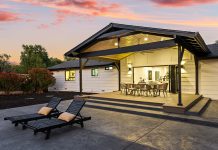What makes housing “affordable?” Affordability is defined by state law as meaning housing that is affordable to households earning 80 percent or less of the area median income. In Sonoma County, the area median income for a four-person household is $75,900. For many in the community, including veterans, seniors, working families, single-parent households and young professionals, the need for housing that is affordable is greater than ever.
There are many reasons why this need exists, including a shortage in the number of housing units that are affordable, wages that have not kept pace with the rising costs of housing, and continuing low vacancy rates.
Compounding these conditions is the loss of traditional land use programs and funding sources that local governments and affordable housing developers have relied upon in the past to bring new affordable housing units to market.
In 2009, a California court decision eliminated the ability of local governments to require that a certain percentage of units in new rental housing developments be made available to lower income households. And in 2012, Governor Brown dissolved local redevelopment agencies, eliminating powerful land use tools and a critical source of funding for new affordable housing projects. In addition, the amount of federal and state funding available for housing-related assistance programs have been in decline.
The shortage of affordable housing and loss of land use and financial tools have had a significant impact on affordable housing production and are forcing local governments to find new ways to meet the growing demand. In response to these challenges, the Town of Windsor will be taking a number of actions in the coming year that will help create opportunities for the development of new affordable housing units.
First, as part of the General Plan update, the Town will be increasing the amount of land designated for higher density housing development. Higher density housing is typically characterized by smaller-size units grouped together in a single building or multiple buildings (like an apartment building or condominium complex). Individual units in a higher density housing project are typically more affordable than a traditional single-family home for a number of reasons, including smaller unit sizes and lower per unit construction costs. There are other aspects of higher density housing that make it a more affordable housing option for low- and moderate-income households. Higher density housing units typically require less energy use than a single-family home, saving residents money on energy bills. They are also often located within walking distance of transit, shopping or services, which can reduce the need for residents to have and/or use automobiles.
Second, the Town will be looking at updating a number of housing-related programs to promote and incentivize affordable housing development. One of the programs that will be updated is related to accessory dwelling units (also known as “Granny Units”). The update to this program will focus on removing regulations that have historically been a barrier to development of accessory units (such as property setback distances and parking requirements). Also to be considered is a reduction in development impact fees.
Another program scheduled to be updated next year is the Town’s “inclusionary housing” program. The program requires developers of market-rate housing to contribute to the production of affordable housing units in the Town.
Currently, most developers elect to pay an “in-lieu housing fee” to meet their project’s inclusionary housing requirement. While a significant amount of funding has been collected that can be used for the construction of affordable housing units, the actual number of housing units that can be produced with those funds is small in comparison.
The update will focus on creating more flexible options for developers to contribute to the production of affordable housing units, including ways to incentivize use of options other than payment of in-lieu fees. These options might include land dedication or on-site construction of affordable housing units.
Finally, in its most direct action to stimulate construction of affordable housing units, the Town will be making over $1.2 million in inclusionary housing funds available to developers who are prepared to build an affordable housing project in Windsor. These funds, collected through in-lieu fee payments by developers, will be used to subsidize construction costs and leverage other public funding sources. It is anticipated that this funding will help to secure construction of 16 to 32 new affordable units in town.
The challenges of meeting increasing demands for affordable housing are great. While the Town’s actions alone will not solve the problem, they are a significant step forward in response to a very challenging situation.
Ken MacNab is the director of Community Development for Windsor.








